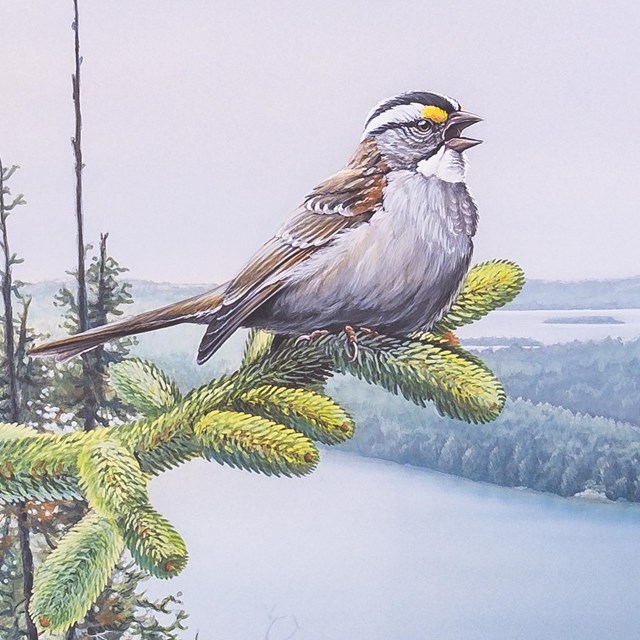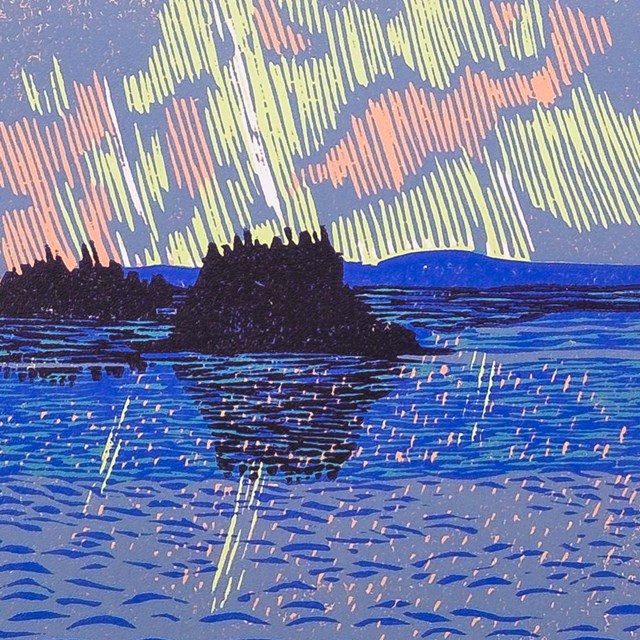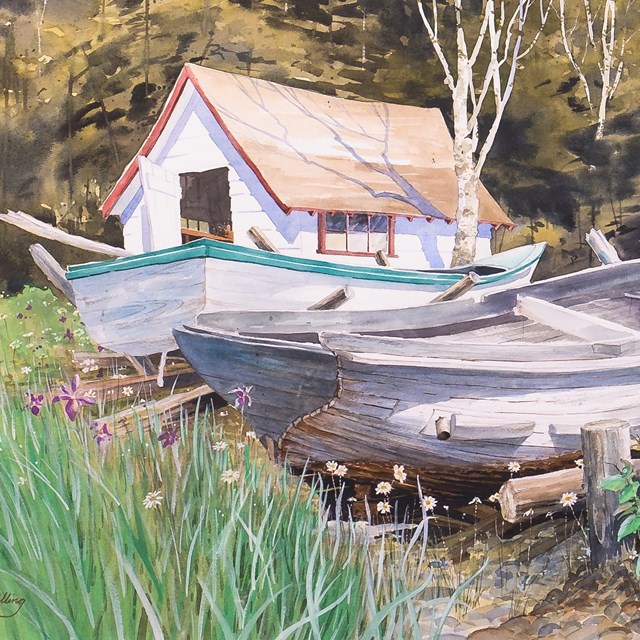
NPS/Paul Brown Isle Royale Reflection"From my journal for July 20, 1994: "I was tired today—too much going on in my life. All this silence makes the tension come seeping out of every joint where it has been stored up for so long. I slept and had dreams which I can’t now recall. The sound of waves fills the cabin and the sun has come out to reveal the sparkling lake and the many islands around us—the light is that peculiar crystalline northern light. I am very pleased by the sudden simplicity of things here—water fetched in a pail, fire kindled on the hearth, candlelight at night. Back to the beginnings of words, and of metaphors." The usual purpose of an artist’s colony is to provide a time free of distractions—in most such places, meals are provided, and studio space, and one is kept far away from the noise and rush of daily life. The natural beauty of the location—usually these colonies are located on rural estates or in remote communities—is secondary to the main purpose, which is ridding the artist of all excuses for not getting down to the task at hand. 
Photo Courtesy of Robert Swanson "Pilgrimage" by James Armstrong
About the Artist*James Armstrong was an Isle Royale Artist-in-Residence from July 19th to August 3rd, 1994. He first saw Lake Superior in 1969 on a family vacation, and he has been fascinated with it ever since. He grew up in Kalamazoo, Michigan, where he earned an MFA from Western Michigan University. Armstrong has a Ph.D. in American literature from Boston University and he currently teaches English and creative writing at Winona State University in Winona, Minnesota, where he lives with his wife and two daughters. He has published two books of poetry; Monument in a Summer Hat, was published in 1999 by New Issues Press and Blue Lash was published in 2006 by Milkweed Editions. He has been the recipient of a PEN-New England Discovery Award and an Illinois Arts Council Fellowship in Poetry.
|
Last updated: January 15, 2020



